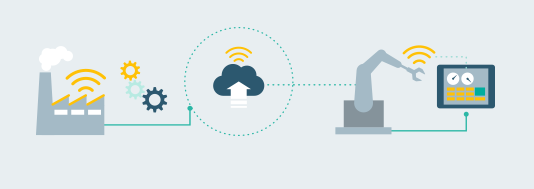What is an industrial IoT gateway?
In an Industrial Internet of Things (IIoT) environment, smart edge devices—from load breakers and meter concentrators to sensors, CCTV cameras, traffic monitoring units, remote PLC controllers, and other automation-enabled devices—are connected to operational networks and controls The hub is powered by an IIoT gateway device, sometimes called an IoT edge gateway. Other common terms used for IIoT gateways are: IoT smart gateway (or smart IoT gateway), IoT edge gateway, IoT gateway hardware (or IoT gateway software), IoT security gateway, or cellular IoT gateway.
The most talked about benefit of IIoT is the shift in focus to improving efficiency and reducing costs using smart edge devices and big data analytics. Still, transmitting large amounts of data over different network connections and in a timely manner to many IIoT devices in remote sites is not an insignificant challenge to overcome. Equally challenging is the need for actionable information (in other words, real-time analytics) to make sense of all the data collected.
A powerful edge IoT computing portfolio is a compelling approach.
Adding IoT computing capabilities at the edge using IIoT gateway hardware is currently receiving significant attention because it allows industrial IoT-шлюзы to perform local storage and processing of data, which means higher reliability, lower latency, and tighter security.
So, if you are planning a new edge IoT computing project (such as remote asset monitoring or distributed video recording/monitoring) after selecting smart edge devices, IoT applications, management and dashboards, you will start considering the following parameters: Select Industrial IoT gateway solutions that fit your project size, deployment strategy, and geographic distribution. To save you some valuable research time, we have listed below some aspects relevant to almost every project we are involved in. They will also be useful to you.
There are five widely accepted criteria for choosing the right Industrial IoT-шлюз:
open standards
Flexible architecture
Cloud technology
граничные вычисления
Cheaper, more flexible hardware
The combination of these standards aims to increase efficiency and reduce costs, and involves new technologies such as LPWAN for IoT LoRA and LoRaWAN® gateways, industrial IoT edge computing, MQTT for IoT and IoT PLC gateways for IoT SCADA.
How Industrial IoT Gateways Work
Edge computing is a cloud environment with automated devices located near the edge of the network rather than in the data center. These “endpoints” are connected to operational networks and control centers through IIoT gateways. Adding cloud computing resources to IIoT gateways at the edge enables local storage and processing of data. Compared to centralized cloud computing, Industrial IoT edge computing offers compelling advantages that are hard to ignore:
· Higher reliability: Since data does not need to be transmitted to a central cloud, communication is not interrupted even if the link is broken
· Reduce latency and network resource consumption for the same reason
· Better security and compliance as no data is exposed when transmitted over public links

Cloud computing and virtualization enable multiple applications to run simultaneously and independently on the same hardware. In the context of IIoT, this means that a single IIoT gateway can not only perform the network functions for which it was originally intended, but can also host other functions related to industrial applications and IIoT management.
The end result is fewer “boxes” because fewer network and IIoT devices are required. This also means better security, as the functions that need to be protected are virtualized within the securely connected IIoT gateway itself. All this means edge computing delivers the insight and agility needed while reducing the number of devices that need to be deployed at remote sites.
Applications of Industrial IoT Gateway
Critical infrastructure, mobile base stations and промышленные шлюзы in industrial digital transformation
The IoT revolution enables automation and monitoring of sensors and systems like never before—not only on a larger scale, but also with greater geographic coverage. Its Industrial Internet of Things (IIoT) flavor impacts utilities and vertical industries. The entire critical infrastructure sector, from electric, gas and water utilities to smart cities and transportation systems, is now undergoing its own digital transformation with considerable new capabilities. Not to mention that CSPs can leverage IIoT E2E solutions for remote asset monitoring of mobile base stations.
This table attempts to list some of the many types of IoT “things” relevant to each of these areas. As you can see, they are completely different in functionality and purpose and require very different solutions to meet their specific needs. Despite their huge differences, they have some things in common. For example, they are all accelerating the adoption of industrial gateway-centric IoT, edge computing and automation. They are all gradually moving to the cloud to benefit from the greater efficiency and scalability it offers, and both are increasingly using big data and analytics. They also shared a heightened awareness of cybersecurity threats in the IoT era. Overall, new technological advancements and open standards are transforming the entire supply chain, lowering costs and shortening time to rollout. It is also important to note that this modern IT paradigm (cloud, MQTT and edge computing) can be used not only for new Industrial IoT deployments, but also to enhance existing legacy systems. The following is a review of the key factors that ultimately influence your choice of IIoT gateway.

Electric Utilities • Smart Grid • Reclosers • Load Breakers • RTU/SCADA • Secondary Substations • Instrument Concentrators
Smart City • Smart Parking • Traffic Monitoring • Bike Sharing • Smart Lighting • Public Safety • Payment Kiosks (PoS)
Connected Industry (“Smart Factory”) • Production floor monitoring • Remote PLC control • Automated quality control
Traffic • Traffic Control • Information Boards • Kiosks
Water Utility • Flow Control • Quality • Leak Detection • Pump/Valve Control • Instrumentation Sensors
Gas Utilities • Flow Meters • Volume/Pressure/Level Sensors
